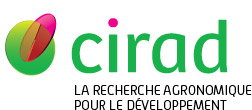Poeplau Christopher, Don Axel, Six Johan, Kaiser Michael, Benbi Dinesh, Chenu Claire, Cotrufo Francesca, Derrien Delphine, Gioacchini Paolo, Grand Stephanie, Gregorich Edward, Griepentrog Marco, Gunina Anna, Haddix Michelle, Kuzyakov Yakov, Kühnel Anna, Macdonald Lynne M., Soong Jennifer L., Trigalet Sylvain, Vermeire Marie-Liesse, Rovira Pere, Van Wesemael Bas, Wiesmeier Martin, Yeasmin Sabina, Yevdokimov Ilya, Nieder Rolf. 2018. Isolating organic carbon fractions with varying turnover rates in temperate agricultural soils - A comprehensive method comparison. Soil Biology and Biochemistry, 125 : 10-26.
|
Version publiée
- Anglais
Accès réservé aux personnels Cirad Utilisation soumise à autorisation de l'auteur ou du Cirad. 5-Poeplau et al 2018 isolating SOC fractions.pdf Télécharger (1MB) | Demander une copie |
Quartile : Q1, Sujet : SOIL SCIENCE
Résumé : Fractionation of soil organic carbon (SOC) is crucial for mechanistic understanding and modeling of soil organic matter decomposition and stabilization processes. It is often aimed at separating the bulk SOC into fractions with varying turnover rates, but a comprehensive comparison of methods to achieve this is lacking. In this study, a total of 20 different SOC fractionation methods were tested by participating laboratories for their suitability to isolate fractions with varying turnover rates, using agricultural soils from three experimental sites with vegetation change from C3 to C4 22–36 years ago. Enrichment of C4-derived carbon was traced and used as a proxy for turnover rates in the fractions. Methods that apply a combination of physical (density, size) and chemical (oxidation, extraction) fractionation were identified as most effective in separating SOC into fractions with distinct turnover rates. Coarse light SOC separated by density fractionation was the most C4-carbon enriched fraction, while oxidation-resistant SOC left after extraction with NaOCl was the least C4-carbon enriched fraction. Surprisingly, even after 36 years of C4 crop cultivation in a temperate climate, no method was able to isolate a fraction with more than 76% turnover, which challenges the link to the most active plant-derived carbon pools in models. Particles with density >2.8 g cm−3 showed similar C4-carbon enrichment as oxidation-resistant SOC, highlighting the importance of sesquioxides for SOC stabilization. The importance of clay and silt-sized particles (<50 μm) for SOC stabilization was also confirmed. Particle size fractionation significantly outperformed aggregate size fractionation, due to the fact that larger aggregates contain smaller aggregates and organic matter particles of various sizes with different turnover rates. An evaluation scheme comprising different criteria was used to identify the most suitable methods for isolating fractions with distinct turnover rates, and potential benefits and trade-offs associated with a specific choice. Our findings can be of great help to select the appropriate method(s) for fractionation of agricultural soils.
Mots-clés Agrovoc : matière organique du sol, fraction du sol, carbone, carbone organique du sol, séquestration du carbone, isotope stable
Mots-clés libres : Carbon sequestration, Carbon stabilization, Soil organic matter, Fractionation, Stable isotopes
Classification Agris : P34 - Biologie du sol
P33 - Chimie et physique du sol
Champ stratégique Cirad : Axe 2 (2014-2018) - Valorisation de la biomasse
Agences de financement hors UE : Deutsche Forschungsgemeinschaft
Auteurs et affiliations
- Poeplau Christopher, Thünen Institute of Climate-Smart Agriculture (DEU) - auteur correspondant
- Don Axel, Thünen Institute of Climate-Smart Agriculture (DEU)
- Six Johan, ETH (CHE)
- Kaiser Michael, Universität Kassel (DEU)
- Benbi Dinesh, Punjab Agricultural University (IND)
- Chenu Claire, INRAE (FRA)
- Cotrufo Francesca, Colorado State University (USA)
- Derrien Delphine, INRA (FRA)
- Gioacchini Paolo, University of Bologna (ITA)
- Grand Stephanie, UNIL (CHE)
- Gregorich Edward, Agriculture and Agri-Food Canada (CAN)
- Griepentrog Marco, ETH (CHE)
- Gunina Anna, Georg-August University of Göttingen (DEU)
- Haddix Michelle, Colorado State University (USA)
- Kuzyakov Yakov, University of Göttingen (DEU)
- Kühnel Anna, Technical University of Munich (DEU)
- Macdonald Lynne M., CSIRO (AUS)
- Soong Jennifer L., Université d'Anvers (BEL)
- Trigalet Sylvain, UCL (BEL)
-
Vermeire Marie-Liesse, UCL (BEL)
 ORCID: 0000-0003-2637-0723
ORCID: 0000-0003-2637-0723
- Rovira Pere, CTFC (ESP)
- Van Wesemael Bas, UCL (BEL)
- Wiesmeier Martin, Technical University of Munich (DEU)
- Yeasmin Sabina, University of Sydney (AUS)
- Yevdokimov Ilya, Russian Academy of Sciences (RUS)
- Nieder Rolf, Technische Universität Braunschweig (DEU)
Source : Cirad-Agritrop (https://agritrop.cirad.fr/613732/)
[ Page générée et mise en cache le 2025-09-28 ]




